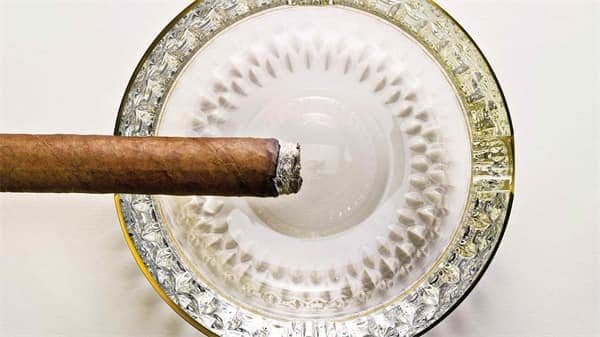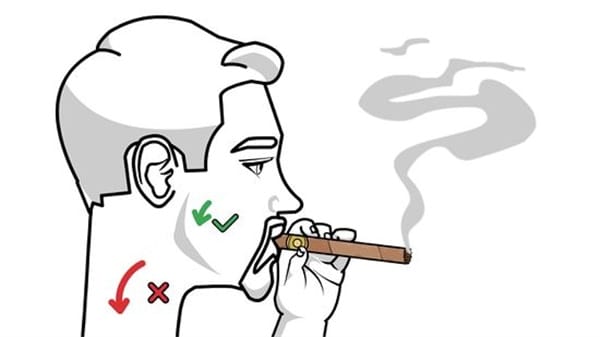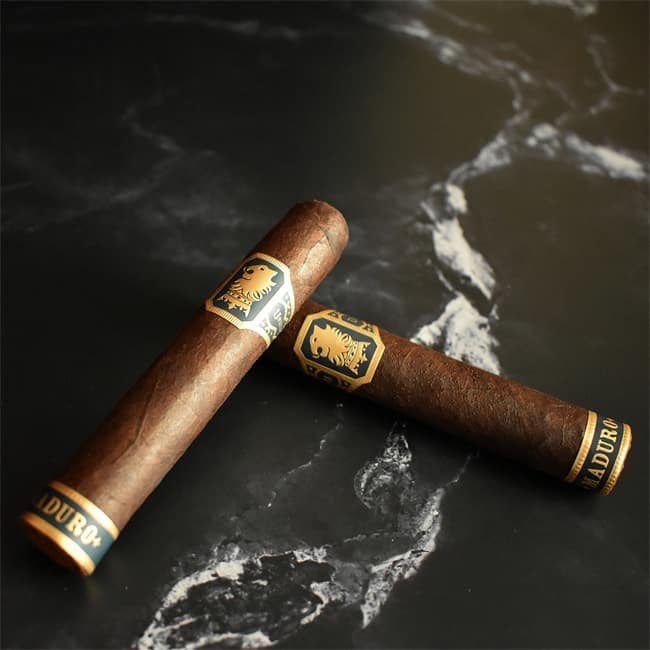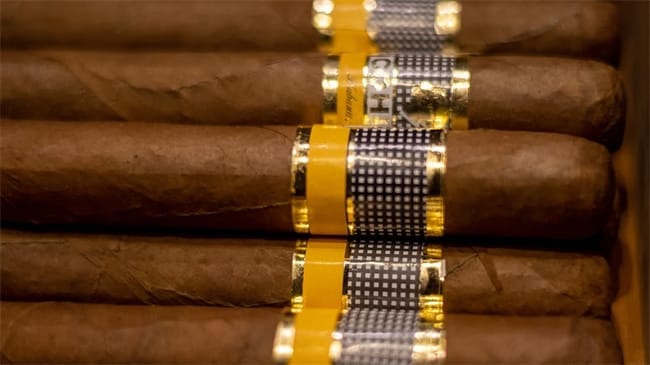How to Ash a Cigar: The Correct Method
When it’s time to ash (usually when the ash is about an inch long), gently tap your cigar on the edge of an ashtray. The idea is to let the ash fall naturally rather than forcing it off, which can cause the burning end to become too hot or disrupt the cigar’s construction.
There are distinct differences between smoking a cigar and a cigarette. First, you don’t need to tap or flick your cigar like a cigarette. Because long-filler tobacco is used in the production of cigars, the ash lasts far longer than that of a cigarette. You’ll probably need to relight a cigar if you flick it frequently in the same manner as you would a cigarette, breaking the ember.
So, how do we properly ash a cigar? Let’s explore how to ash a cigar to ensure a seamless smoking experience. (Related: how to smoke a cigar)
How to ash a cigar?
Properly ashing a cigar enhances the smoking experience and maintains the cigar’s integrity. Be patient and let the ash grow to about an inch, indicating an even burn, or wait for a crack to develop in the ash. When ready to ash, gently tap the cigar on the edge of an ashtray to ensure the ash falls off without damaging the wrapper or causing an uneven burn. (Related: How to Put Out a Cigar)
Avoid flicking the ash off as you would with a cigarette, which can harm the cigar’s structure. Use a proper ashtray designed for cigars, which typically features wide grooves to support the cigar and catch the ash neatly.

Neglecting the correct disposal of ash could be a costly error because it can wind up everywhere. If correct cigar etiquette isn’t followed, ashing a cigar the wrong way can be embarrassing, indicate to other smokers that you’re new to the game, and ruin your smoking experience and cigar flavor.
Do you have to ash a cigar?
Yes! It may sound surprising, but you have to let the ash fall of by itself.
A good amount of ash can be held by a cigar if it is constructed and rolled well. In a way, if you could resist ashing your cigar away at all times, it would improve the smoking experience.
The remaining ash may fall off by itself when placing a cigar gently in an ashtray or on the table. Frequent ashing can, therefore, see the cigar burn faster than anticipated, changing the desired story’s taste.
Cigar ash color
There are several colors of cigar ash, White or Light Grey, Dark or Black. This is determined by the cigar quality and the soil where the tobacco is grown.
White or Light Grey Ash: White or Light Grey ash indicates that the tobacco was grown in mineral-rich soil, especially with high potassium and magnesium content. This type of ash is usually associated with a good burn and indicates a better-quality cigar.

Dark or Black Ash: Dark gray, sometimes black in color, usually indicates tobacco grown in soils with low mineral content. This indicates that the cigar may be of poor quality.
Ash Variations: Cigar ash can also have a mixture of colors, including gray with black streaks or flecks. There are other mixtures of tobacco in the cigar.
White dots on cigar ash
White dots on cigar ash refers to a cigar that is likely to be of high quality.

White dots on cigar ash refer to the texture of the leaf, which includes small bumps or pockets of oils that appear as raised spots. When a toothy wrapper burns, these oil pockets cause the white dots to form in the ash.
The white dots can also be linked to the mineral content, particularly magnesium, in the tobacco’s soil. When these minerals are present in high concentrations, they can manifest as white specks in the ash as the cigar burns.
What can cigar ash tells about ash?
Firstly, long and firm ash of your cigar indicates that the rolling has been done well. Although, your cigar ash has one more beneficial advantage than just being a competitive element. Let’s assume that this cigar ash is, for example, about 5/8 inches in length and serves as a kind of filter that would slow down burning and make it cooler. This could also spur out some extra flavors to add to the mixture. In addition, a very long ash can suffocate the burning part at the end of your cigar and extinguish it.

In some cases, where you have allowed the ash to remains in the cigar for too long, or the ash is turning out to be cumbersome, it may be better to roll your ash on the sides or at the base of the ashtray. This is because leaving some of the ash will ensure that the cigar burns evenly.
Does the cigar’s color convey anything about your ash?
White is considered the ideal ash color because it represents the high calcium content of the soil in which cigar tobacco was grown. It is also preferable when the ash is light grey with white streaks. Dominican soil is often connected with white ash.
The darker, almost black ash that is less desired will frequently generate a less pleasant, more acidic, partially burned flavor and fragrance and disclose fewer minerals in the soil.

Where do you ash cigar?
As a cigar enthusiast, you need a stray to clean your surroundings.
In case you are in a place outside the house where the ashtrays are unavailable, then an empty water bottle or cup might serve the purpose well.
Whenever I’m about to smoke a cigar, no matter where, I carry an ash tray with me just so that I don’t have to ash the cigars on the ground.
If you want to buy a cheap cigar, click below.
FAQ
Cigar ash can be retained up to 1 inch in length.
1-inch cigar ash. When the ash of a cigar burns longer, it is time to ash the cigar.
Place the head of the cigar on the ashtray and gently tap the end of the cigar.
This first flick can be properly done by resting the cigar against the side of the ashtray and gently tapping the end of the cigar.
Yes, Cigar ash can be beneficial for plants under certain conditions. It contains essential nutrients such as potassium, calcium, and magnesium, which are vital for plant growth and development. Excessive use of ash can lead to harmful effects, such as an imbalance in soil pH or accumulation of potentially toxic chemicals like nicotine, which could be detrimental to plant health.
Cigar ashes can provide certain nutrients to the soil, such as potassium, calcium, and magnesium, which are beneficial for plant growth. But Excessive use of ash can also alter the pH of the soil, potentially making it too alkaline for some plants.
Cigar ashes themselves are not flammable, however, if cigar ashes are still hot, they can be a risk for starting a fire if they come into contact with flammable materials.
Choose well-made cigars known for good construction, as they can hold their ash longer. Smoke slowly, taking slow puffs at regular times to prevent the cigar from burning too hot and causing the ash to fall off early. Hold the cigar straight or tilt it up slightly to keep the ash balanced and prevent it from falling off.






